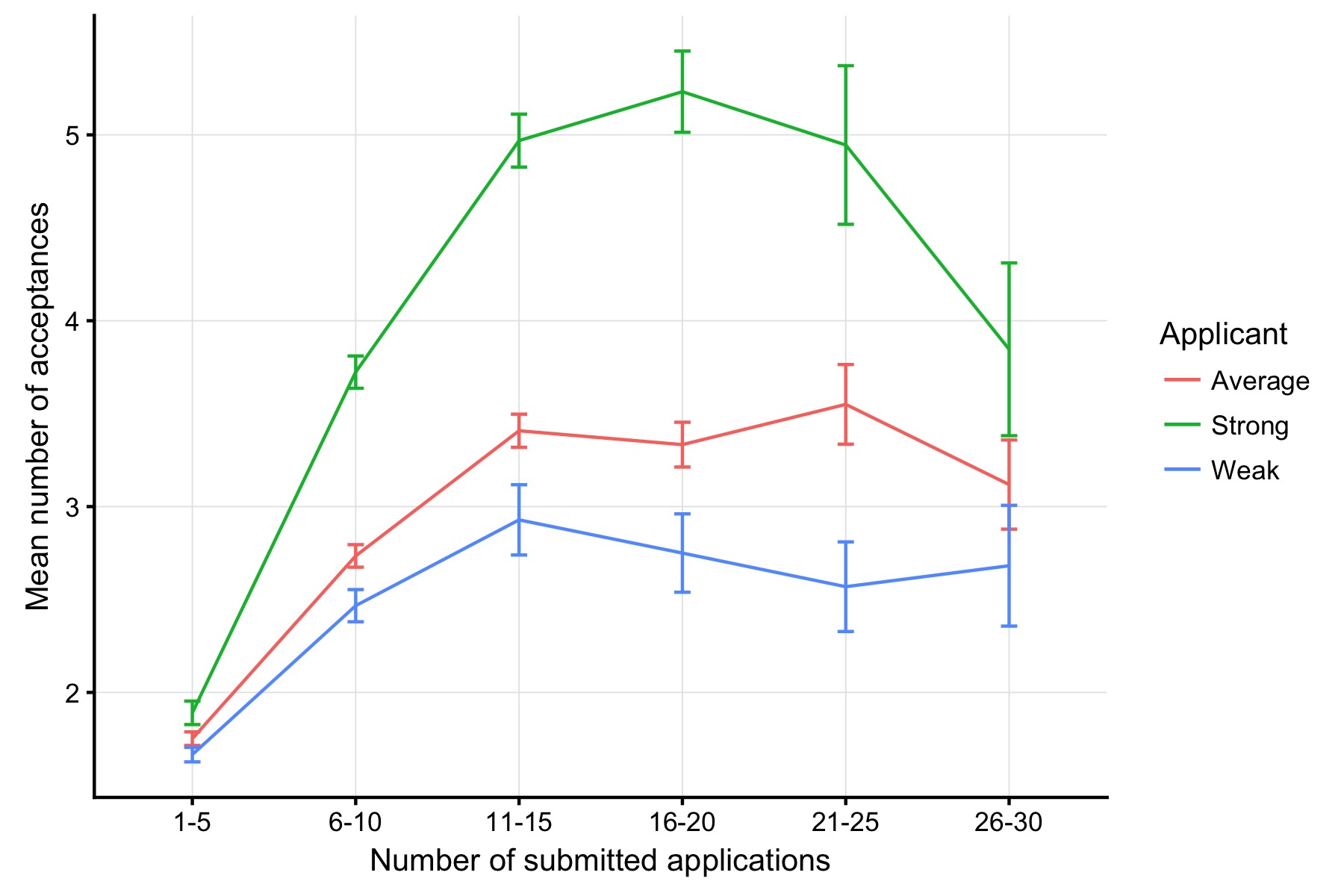3 steps to building the perfect medical school application list
The list of medical schools you apply to is one of the most important factors in determining whether you ultimately get accepted. A good list will maximize your chances for acceptance and make sure you don’t spend too much time or money on schools that are unlikely to accept you. With the data from previous MedChances applicants, we’ve put together a data-driven approach for crafting the ultimate list, saving you time and money, and maximizing your chances of going to medical school.
Step 1: Choose how many schools you want to apply to
The AAMC reported that applicants submitted an average of 16 applications in 2017. But this number varied greatly, with some students applying to over 40 schools. Submitting this many applications is time-consuming, stressful, and expensive. In fact, although many people believe that applying to a greater number of schools will increase your odds of getting accepted, our data suggest that there is a point of diminishing returns.
Using data from over 7,000 previous MedChances applicants, we plotted the number of submitted applications versus the average number of acceptances to determine the optimal number of schools in your application list.

We classified applicants as “strong,” “average,” or “weak” based on their GPA and MCAT scores. Applicants who fell in the upper 25th percentile were considered “strong,” while those with a score in the bottom 25th percentile were considered “weak.” Average applicants fell in the middle of these two cutoffs.
Interestingly, for all three classes of applicants, applying to more than 15 schools did not increase the number of schools to which they were accepted! Therefore, for most applicants, we suggest that you keep your list to 12-15 schools, which will save you a significant amount of time and money. This number will also allow you to fully focus on the applications you choose fill out instead of spreading yourself too thin.
However, no matter how many schools you apply to, it’s crucial that you apply to the right schools, in order to maximize your chances.
Step 2: Break down your list to 50% target, 25% reach, and 25% safety schools
For a list of 15 schools, we recommend that you identify 7 target schools, 4 reach schools, and 4 safety schools. You can use MedChances to calculate your admission predictions (it’s completely free) and see your chances of getting accepted to each school on your list, based on data from former applicants (for more details on how our tool works, see our FAQ).
Here’s how to distinguish safety, reach, and target schools using MedChances predictions:
- Safety schools are those at which your chances are greater than 50%
- Target schools are those where your chances are between 25-50%
- Reach schools are those where your chances are less than 25%
We’ve based our definitions of safety, target and reach schools on data we have aggregated from previous MedChances applicants. If you’d like to take a closer look at some of the factors that determine whether a medical school is a reach school, you can take a look at its ranking, and the median GPA and MCAT scores of accepted students.
Step 3: Research candidate schools
You may identify a number of different schools that are potential safety, reach, and targets. How do you choose which ones to keep on your final list?
First and foremost, we recommend always including your in-state schools. Based on our data, regional bias is a strong factor, and by applying to in-state schools you can raise your chances by several orders of magnitude!
In addition, consider logistical factors, such as the pre-med requirements for that school, whether it accepts the AMCAS (many Texas schools accept a different application called the TMDSAS), and the tuition. By considering these factors you can streamline the application process and save precious time, which you can then use to make sure that the applications you do submit are thorough and strong.
And of course, also important are your personal preferences, such as whether the pre-clinical curriculum is pass/fail, geographical location, and extracurricular options. Though these factors may not affect your chances of acceptance, they will greatly affect your experience once you are in medical school. Much of these data can be gleaned from the free data available in MSAR.
Good luck with your applications! As always, feel free to e-mail us if you want feedback on your specific school list or if you have any questions.
